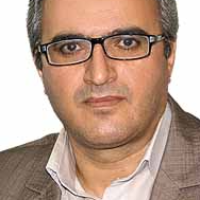Methodology of Applying Prophetic Ahadith in the Mystical Works of the First Seven Islamic Centuries
Ahadith are of great importance to mystics and Sufis, as they have cited them to explain their intellectual frameworks, both after Quranic verses and independently. This is confirmed by the application of more than ten thousand ahadith and pseudo-ahadith. However, sometimes a coherent and codified system is observed in some of these applications, but most of them lack a formal order or arrangement, where only the semantic function of the cited ahadith has been considered. If a "mystic" or sufi is well-acquainted with ahadith and even goes beyond that, to the extent of being considered a "hadith-narrator" (or mohaddeth), he will have a unique "perception" and "application" for ahadith due to his special worldview and methodology. This "methodological monopoly" does not imply that there is a "single approach" to dealing with ahadith, as one group has considered hadith narration to be subject to the fulfillment of tasks such as "self-purification" while another group strictly prohibited any hadith narration. By relying on library sources, the quantitative and qualitative status of the ahadith applied in the most important mystical prose works of the first seven centuries were studied in this research. The findings showed that the citation of narratives has been increased during the first seven Islamic centuries, and mystics and sufis have not sought to explain their methodology in approaching and perceiving ahadith; rather, they have used them with respect to the positivist function of "prophetic hadith" to establish their own teachings and goals.
-
Self-Discovery in Existential Psychotherapy: Comparing the Views of Sadra and Van Deurzen
Fateme Fazelzade *, Majid Mollayousefi, Mohammadjavad Shams, Alireza Kakavand
Ayeneh Marefat, -
Mystics' interpretation of "Mohammadioun" in the mystical prose works of the first seven centuries
MohammadRaja Sahebdel, MohammadJavad Shams *, Shahram Pazouki
Motaleat - e - Taghribi Mazaheb - e - Eslami, -
دغدغه نگاشت های یک پدر
محمدرجاء صاحبدل
مجله کودک، اردیبهشت 1397




